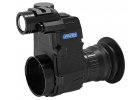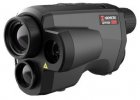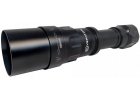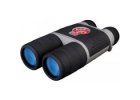Night vision
Night vision works on the principle of amplifying residual light.
Natural sources of residual light include starlight and moonlight. You can learn more about night vision at our website noktovizor.cz.
#ShowMore#
Analog Night Vision
Analog night vision is a traditional technology developed during World War II that is still widely used today. It works by amplifying ambient light.
How it works: Analog devices use an image intensifier tube to convert photons (light particles) into electrons, amplify them, and convert them back into photons to form a visible image.
Advantages:
-
Fast response: Provides an almost instant image with no delay.
-
High light sensitivity: Performs well even in extremely low light conditions.
Disadvantages:
-
Sensitive to bright light: Intense light can damage the image intensifier.
-
Less durable: Analog devices may be more prone to mechanical damage.
Digital Night Vision
Digital night vision is a newer technology that uses digital sensors to detect and process light.
How it works: Digital devices use sensors like CMOS or CCD to capture light, which is then digitally processed and displayed on a screen. These devices usually require infrared (IR) illumination to work effectively in total darkness. Learn more about IR illuminators and how to choose the right one in this article.
Advantages:
-
Daylight compatible: Works both day and night and isn’t sensitive to bright light.
-
More features: Enables video recording, digital zoom, and connection to other devices.
-
Day/Night dual-mode: Most digital devices allow you to switch between color daytime mode and black-and-white (or green) night mode. During the day, the device works like a digital camera. At night, with IR illumination, it switches to night mode.
Disadvantages:
-
Image delay: Slight delay may occur due to digital processing—but with modern devices, it’s barely noticeable.
-
Higher power consumption: Digital devices usually require more energy, which is addressed by larger, rechargeable batteries—either built-in or removable.
Key Night Vision Parameters Explained
Sensor Resolution:
Affects image detail in digital night vision. Higher resolutions—such as 1920x1080 (Full HD), 2560x1440 (2K), or 3840x2160 (4K)—deliver better image quality, especially in low-light conditions.
Sensitivity:
Indicates how well a device performs in low light. Higher sensitivity (often expressed in lux) means better performance in near-total darkness. A standard value is 0.001 lux.
Sensor Type:
Determines image processing. CMOS sensors are common due to low power consumption and fast image processing, while CCD sensors offer higher sensitivity and better image quality in low light.
Lens:
Lens size and quality affect field of view and light-gathering ability. Larger lenses offer wider views and better performance in darkness.
Zoom:
Can be optical (using lenses for real magnification) or digital (software-based magnification, which may reduce image quality).
Tube Size:
Refers to the device body diameter—typically 30 mm or 34 mm—which determines compatibility with mounting systems (e.g., rifle scopes). Unlike traditional optics, tube size does not affect image quality. All digital night vision scopes in our range use a 30 mm tube—the same as conventional optics.
Display:
Shows the processed image. Technologies include OLED and LCD. Higher display resolution (e.g., 800x800 px or higher) means better image sharpness and clarity.
Ballistic Calculator:
Helps shooters calculate the optimal bullet trajectory based on distance, angle, wind, and other factors—essential for accurate long-range shooting.
Illumination:
Infrared (IR) light—either invisible or nearly invisible—enhances visibility in complete darkness. It helps the sensor detect objects when natural light is insufficient.
Illumination Wavelength:
Specifies the type of IR light used. Common wavelengths include:
-
850 nm – slightly visible red glow
-
940 nm – completely invisible to the human eye
Wavelength affects range and stealth. In simple terms, illumination...
(Note: The last sentence "Simply put, illumination..." seems cut off. Would you like me to finish that for you?)






































